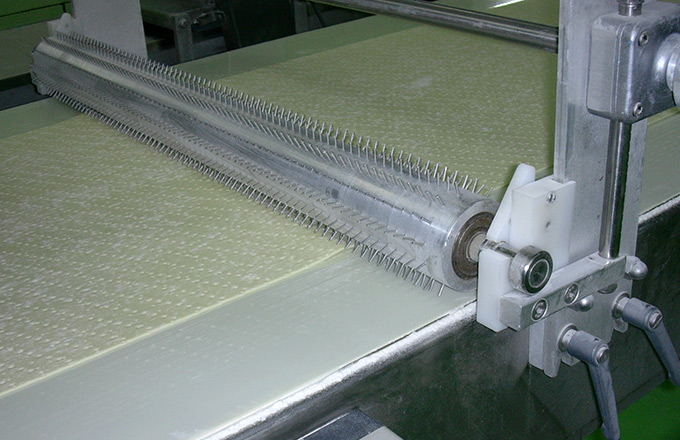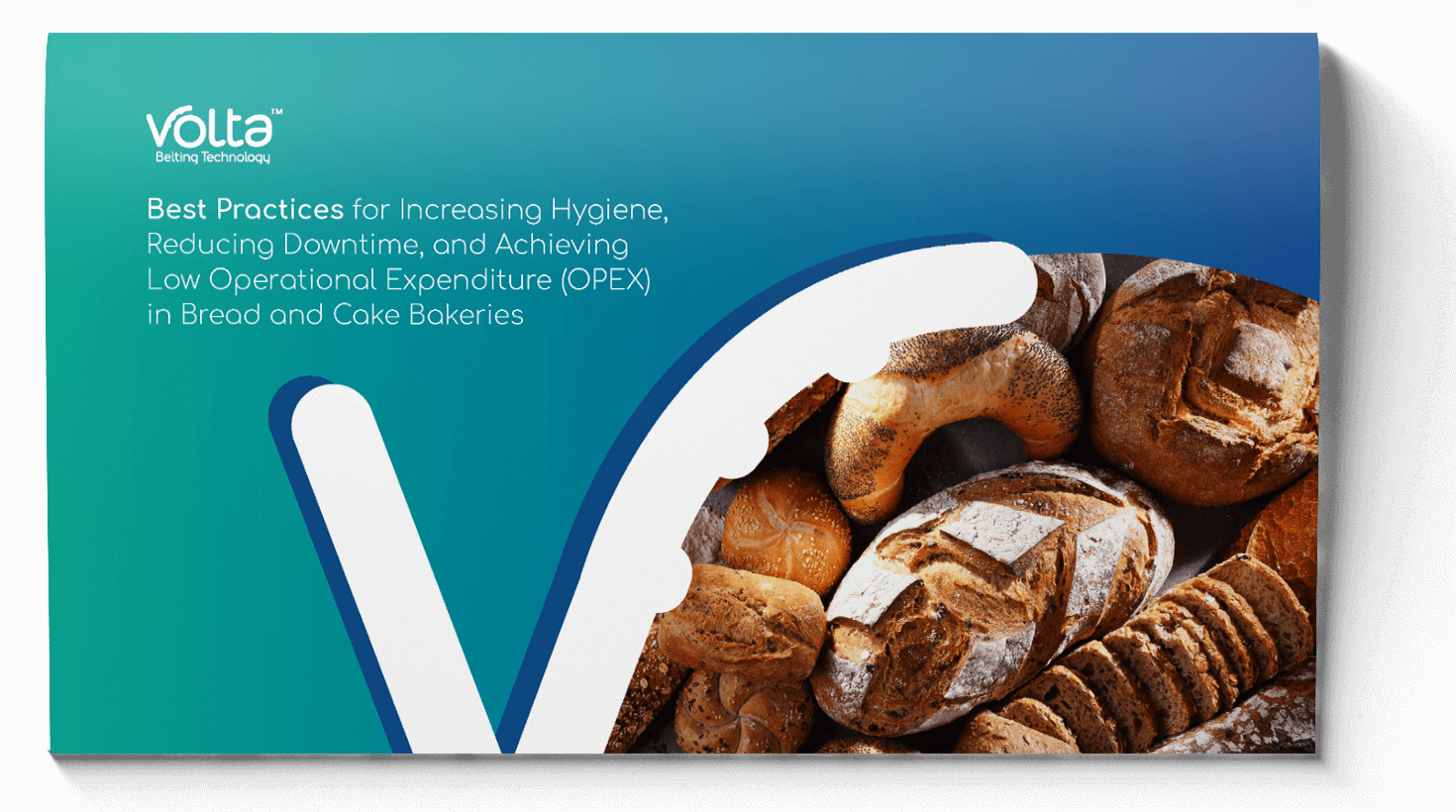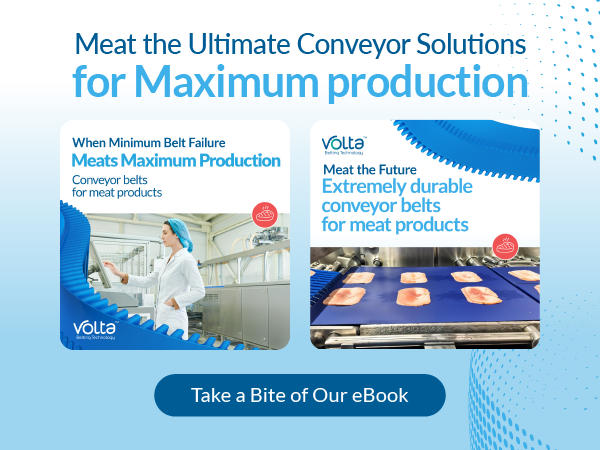Home » Industries » Food & Hygiene » Bakeries
Bakeries
Bread and cake bakeries handle dough in large batches and use specialized machinery to form bakery products. The typical line is comprised of a long series of interacting machines along with simple reclaim conveying equipment. Dough with a low-fat content can be sticky. Volta conveyor belts have a denser top surface, retaining less dough and being far easier to keep clean. In biscuit/cookie production, the belts run around multiple small diameter axles or nose bars which reduce belt life drastically. It has been reported that our belts have performed nearly five times the working life in these applications.
Biscuit/Cookie production
One of the world’s largest producers of cookies used conventional plied and canvas belts for decades. They were required to change them every two to three months because the splice failed on the finger joints from following a belt path that included nine pulleys. This is typical of biscuit and cookie lines where dough is rolled and sheeted to a very thin gauge. Typically, scrapers are used on the return side on a number of these conveyors, causing additional damage to the belt surface. A Volta food grade flat belt was selected to match the pulley constraints and lasted for 26 months. This was over eight times the lifespan of the conventional belt. Many belts in the plant were replaced with Volta where scrapers were installed, and no damage was reported.
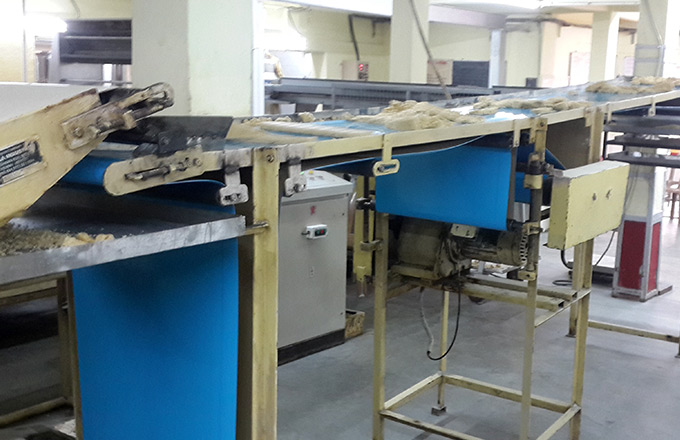
Deep trough capabilities
The producer of frozen bakery croissants utilizes a deep trough conveyor to avoid using welded side wall. A SuperDrive™ LT belt was used to provide extreme pliability. The flexibility of the belt enabled the deep troughing required to move the product centralized and hygienically. It also reduced the length of the transition zone needed to fold the belt in and out of the trough at either end of the conveyor. The intake end is traditionally the vulnerable area in terms of product loss.
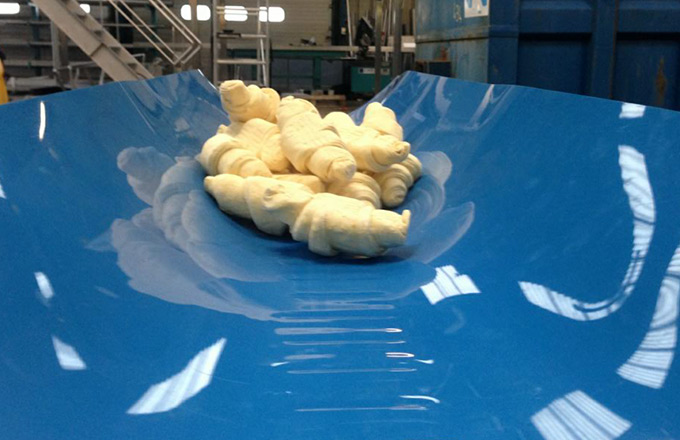
Cutting and docking on belts
Cutting and docking processes have always been trouble spots where belt wear and tear is high. A secondary problem of concern in modern bakeries is the accumulation of bacteria in the cuts and fissures that develop before the belt fails. This type of deterioration in belt quality during its working life highlights the difference between mechanical lifetime and hygienic lifetime. While good mechanical lifetime is a gauge of success in non-hygienic applications, this cannot be used as a standard in food processing where the prime concern is hygiene. The main way to save cleaning and maintenance costs is by preventing contamination. Volta belts prevent this unhygienic wear and tear in bakery applications.
